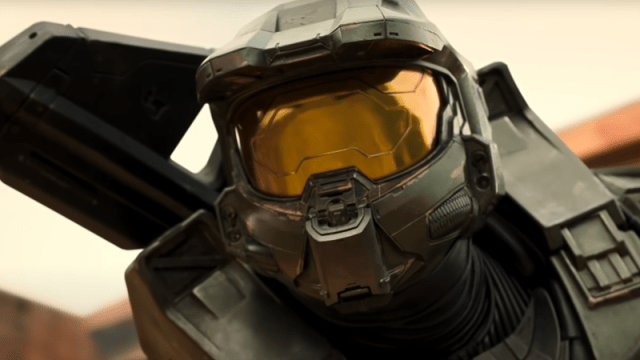Any adaptation is always going to have to tweak its source material to fit the scope and format of whatever medium it finds itself in — but the team behind Halo, both the long-running game franchise and the upcoming live-action streaming series — have gone to great lengths to set expectations among fans about the fact that things will change when Master Chief jumps from Xboxes to streaming TV.
In a lengthy new blog post this week, 343 Industries’ head of transmedia Kiki Wolfkill and Halo creative director Frank O’Connor took to the official Halo site and dove into the creation of what has been dubbed the “Silver Timeline” for Halo: The Series, a completely separate but adjacent branch of continuity diverged from the Halo games and their accompanying novels from the past 20 years of Master Chief saving the galaxy and occasionally being reminded that he was a child soldier. The separate timeline for Halo: The Series is named for one of the key tweaks between the game series’ continuity, Silver Team, the trio of Spartan-II soldiers that will accompany Pablo Schrieber’s Master Chief in the show — even if, 343 hinted, that the members of Silver Team do also exist somewhere out there in the continuity of the games.
Which is interesting in part because Wolfkill and O’Connor also explicitly reassured fans that while the Silver Timeline is a different strand of Halo canon, it’s not radically different to the point that it’s unrecognizable to people who have devoured the ancillary Halo material that has fleshed out the universe of the games for years at this point. “Basically, we want to use the existing Halo lore, history, canon, and characters wherever they make sense for a linear narrative, but also separate the two distinctly so that we don’t invalidate the core canon or do unnatural things to force a first-person video game into an ensemble TV show,” O’Connor explained. “The game canon and its extended lore in novels, comics, and other outlets is core, original, and will continue unbroken for as long as we make Halo games.”
For the most part, this means that the wider narrative beats Halo: The Series will cover will already be familiar to fans of the games and books — glimpses of which we’ve already seen in the show’s trailers, like the Spartan-II’s role in quelling resistance from colonial insurrectionists before the alien armies of the Covenant make themselves known to humanity. But in order to have time to flesh out certain points or to fit the need of making a new TV series, certain details to get between those larger beats will be new. One interesting tweak that O’Connor mentioned comes from the very first episode of the show, and one of Halo’s most iconic early moments: the discovery of one of the titular Halo ring structures. In the first Halo game, Master Chief and his A.I. companion Cortana’s warship comes across the Halo by accident, escaping the fallen human planet Reach on a random jump vector to avoid being tracked by the Covenant. But according to O’Connor, the “coincidence” of that discovery will not be the case in the series.
Thankfully, giving the series an entire continuity of its own doesn’t mean that the show will avoid some of the darker moral nuances about Halo’s world that were expounded upon in its original tie-in novels to give a contrast to the otherwise traditional “human vs. sinister alien bad guys” plots of the first few games, either. “Most Halo lore fans are aware of the origin story of Chief, the Spartan program, and the machinations and outcomes of that program, but haven’t seen it through the eyes of the kids who experienced it, or the adults tasked with making it happen,” O’Connor stressed. “We get to do that, and also tell a story about a fairly dark period in the Halo universe, and unblinkingly look at the ethics and morality–but with the advantage of perspective. We know why the SPARTAN-II program happened and also why it may have been necessary, but the moral ambiguity of both events and characters is going to act as a prism for how we view things we thought we already knew.”
So while fans of the games will have a relative awareness of what directions the Halo show will go in — especially those familiar with the storytelling beyond the games themselves — there’ll still be some surprises and added depth along the way. Hopefully by making it clear that this is a different, but still familiar line of continuity, they won’t annoy too many Halo diehards when things do change. Halo: The Series is set to hit Paramount+ at some point in 2022.
